13 Evergreen Shrubs That Bring Color to Winter Gardens
Winter gardens can sometimes look bare and dull, but the right evergreen shrubs can change that. These hardy plants provide color and texture all year long, even when the temperatures drop. Adding evergreen shrubs to your landscape can create a lively contrast against the gray skies and snow. They bring structure and warmth to the garden during colder months. Keep reading to learn about shrubs that will keep your garden vibrant through winter.
This post may contain affiliate links, which helps keep this content free. Please read our disclosure for more info.
Boxwood (Buxus sempervirens)

Boxwoods are classic evergreen shrubs, known for their neat, dense foliage. Their dark green leaves provide structure and elegance throughout the year. In winter, they maintain a rich color that contrasts beautifully with snowy landscapes. Boxwoods are easy to shape, making them perfect for formal hedges or borders.
These shrubs thrive in well-drained soil and partial shade, though they can tolerate full sun in cooler climates. Boxwoods are hardy and can survive in a variety of conditions. Their compact size makes them ideal for smaller gardens, while larger varieties can create privacy screens. Regular pruning helps to keep them looking tidy and encourages healthy growth.
Holly (Ilex aquifolium)
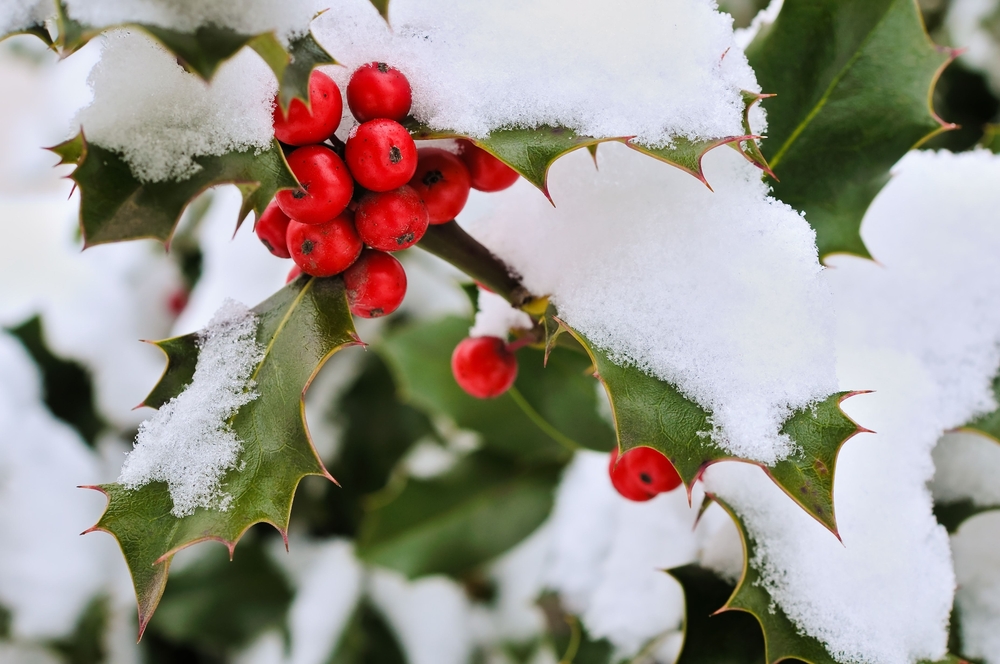
Holly is widely celebrated for its glossy, spiny leaves and vibrant red berries, which last well into winter. This shrub adds a festive touch to gardens during the colder months, and its evergreen nature provides year-round interest. Male and female plants are needed to produce berries, which attract birds. The bright red berries contrast beautifully against the deep green foliage, creating a stunning visual effect.
Holly shrubs thrive in moist, well-drained soil and prefer a sunny to partially shaded location. They are versatile and work well as hedges, accents, or in foundation plantings. The sharp leaves can serve as a natural deterrent to intruders, adding an extra layer of security. Regular pruning helps to maintain their shape and health.
Winterberry Holly (Ilex verticillata)
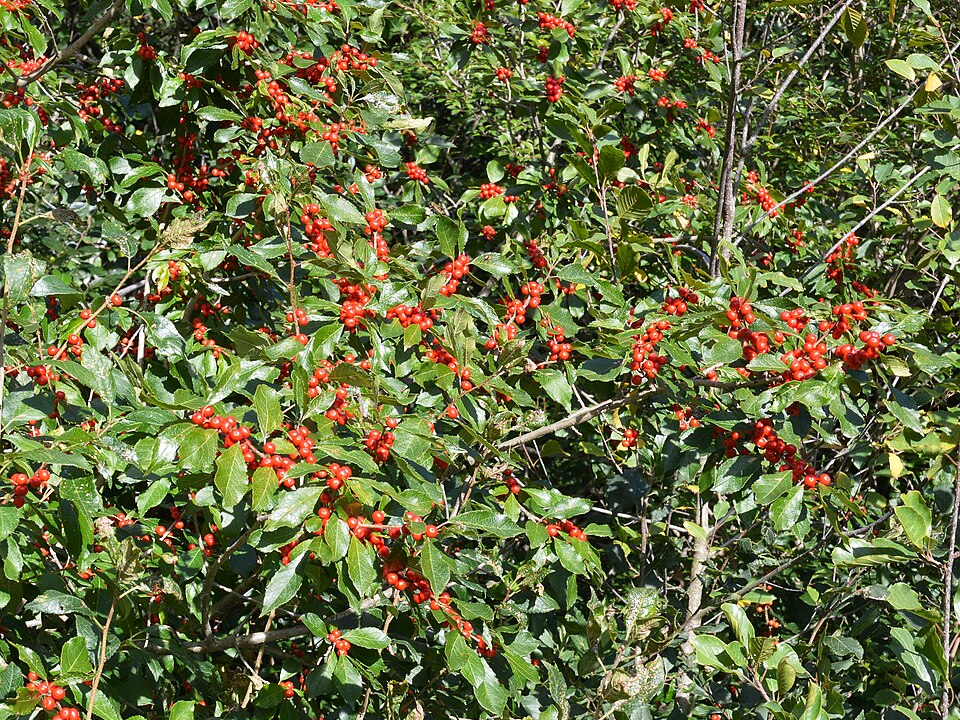
Winterberry holly is a deciduous shrub that holds its vibrant red berries throughout the winter. Unlike other hollies, it loses its leaves but still maintains an eye-catching display. The bright berries stand out against the bare branches, creating a splash of color in winter landscapes. This shrub is an excellent addition to gardens that need winter interest.
Winterberry holly thrives in moist, acidic soils and can tolerate wet conditions. It prefers full sun to partial shade and grows best in USDA hardiness zones 3 to 9. A male plant is needed for pollination to produce the famous red berries. The shrub is low-maintenance, requiring minimal pruning to keep its shape.
Rhododendron
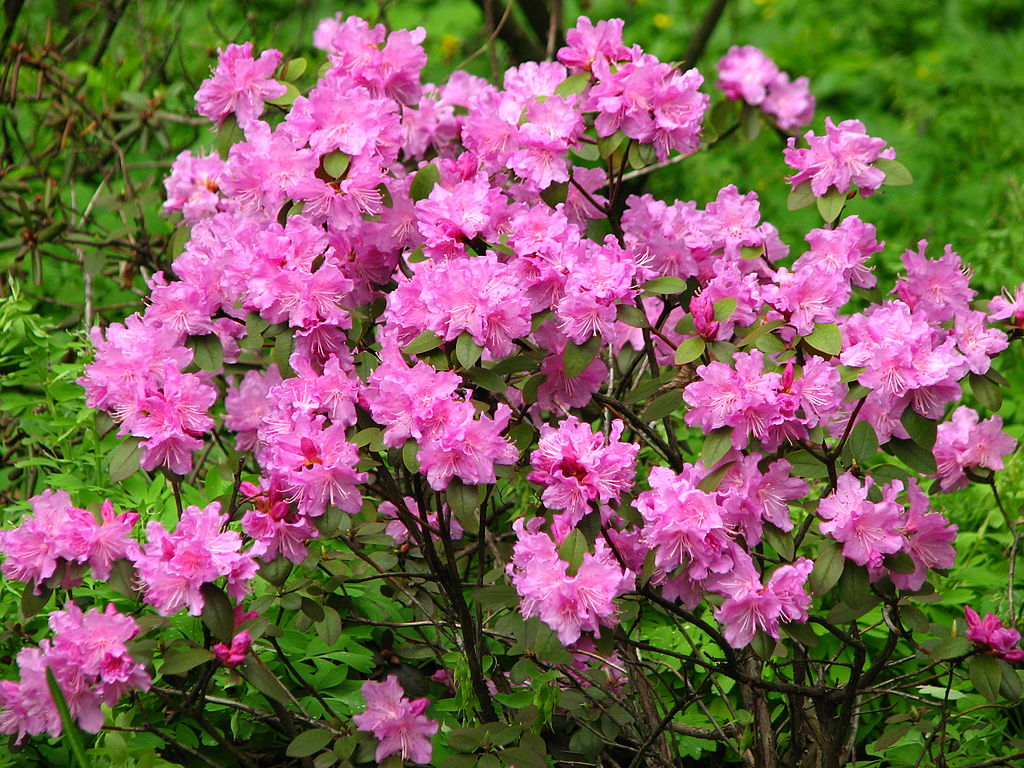
Rhododendrons are known for their large, leathery leaves that stay green throughout the winter. Some varieties also produce colorful flowers in early spring, offering a burst of color. The rich, dark green foliage provides a strong contrast to the rest of the garden during the colder months. These shrubs are perfect for adding texture and structure to shaded areas.
Rhododendrons prefer acidic, well-drained soil and thrive in partial shade. They are relatively low-maintenance and resistant to pests and diseases. Regular watering, especially during dry periods, helps to keep them healthy. Some varieties can grow quite large, so they are well-suited for larger spaces or as a backdrop in a garden.
Camellia (Camellia japonica)
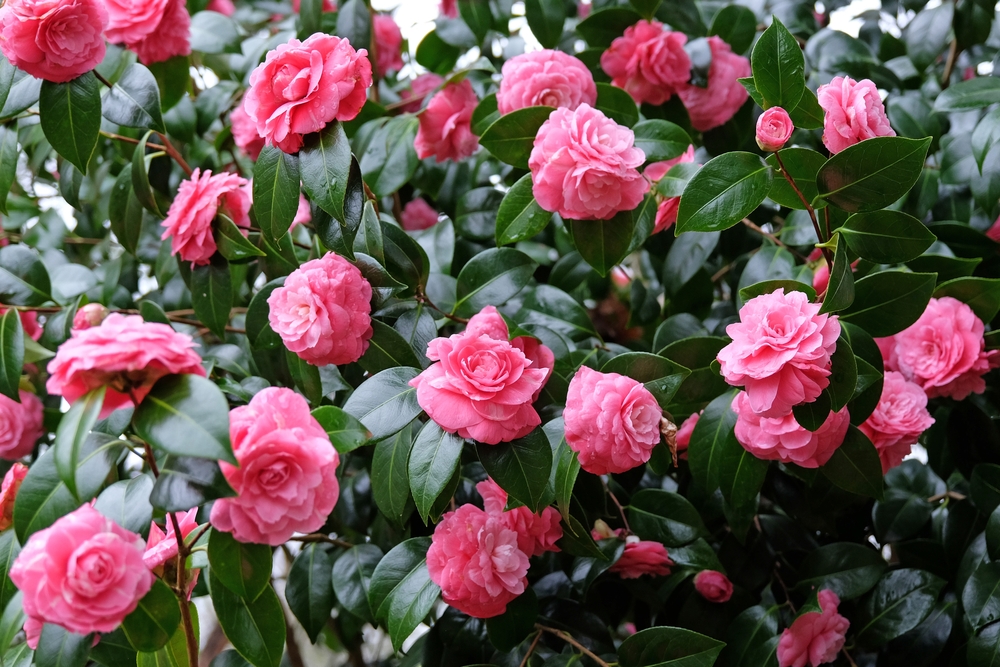
Camellias are evergreen shrubs with beautiful, glossy leaves and large, showy flowers in the late winter or early spring. The blooms come in a variety of colors, including pink, red, and white, adding a soft yet striking touch to the winter garden. Their flowers can last for weeks, brightening up dull winter days. The deep green foliage remains attractive throughout the year.
Camellias grow best in acidic, well-drained soils and prefer partial to full shade. They are ideal for planting in woodland gardens or along shaded borders. While they are relatively low-maintenance, it is important to protect them from frost in colder climates. Pruning should be done after the flowering period to maintain their shape.
Pieris (Pieris japonica)
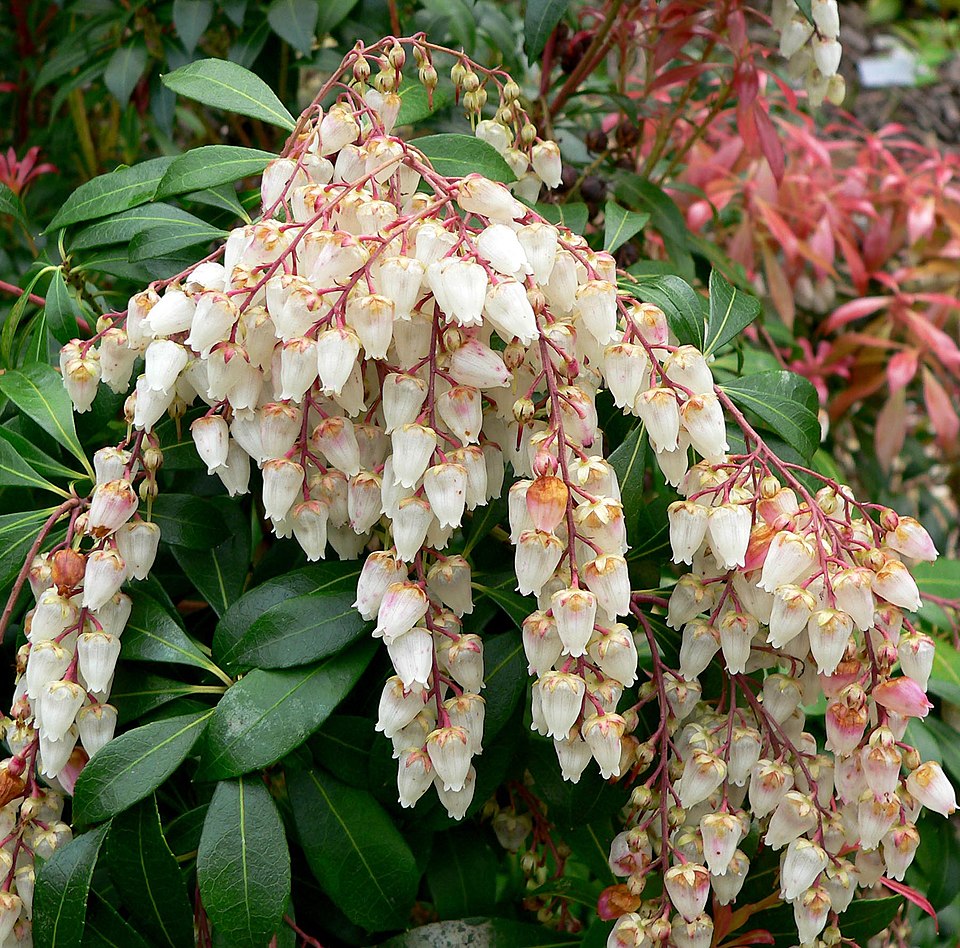
Pieris, commonly known as Japanese pieris, is an evergreen shrub known for its stunning foliage and early spring flowers. The young leaves are often red or bronze, providing a vibrant contrast to the older green leaves. In early spring, clusters of white or pink flowers appear, offering even more color. This shrub adds both texture and visual interest to gardens in the winter months.
Pieris thrives in acidic, well-drained soil and prefers partial shade. It is tolerant of a variety of soil types but requires good moisture retention. Pieris is relatively pest-resistant, making it a low-maintenance shrub for gardeners. It is perfect for adding color and variety to a shaded garden.
Lavender (Lavandula spp.)
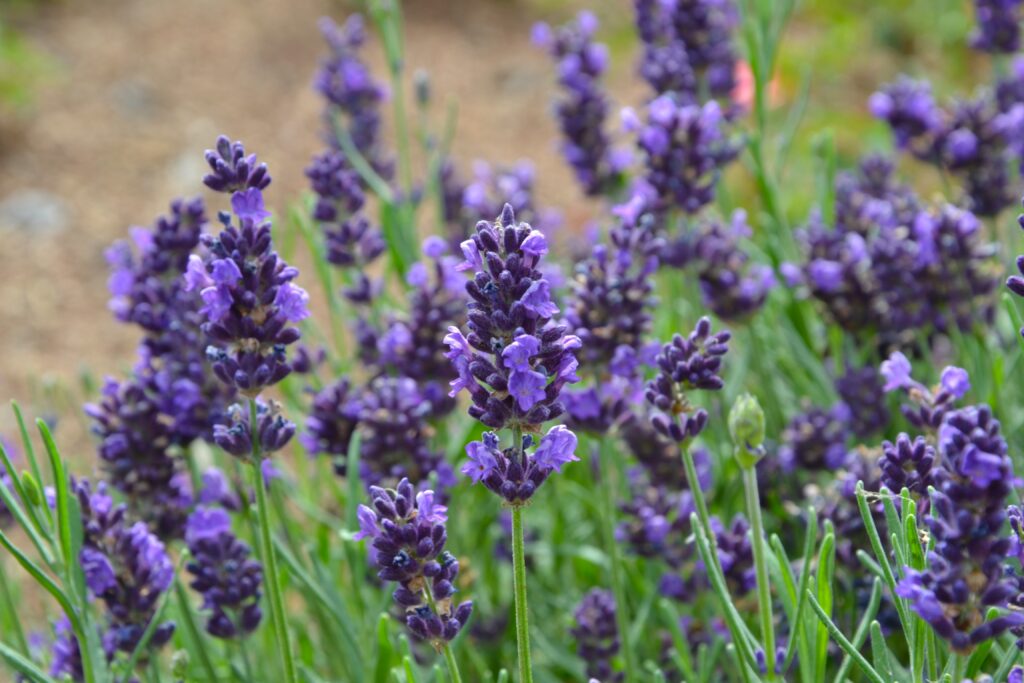
Lavender is a fragrant, evergreen shrub that thrives in sunny locations, adding both color and scent to the winter garden. Its silvery-green foliage remains attractive year-round, while its purple blooms brighten up the colder months. Lavender works well in borders, rock gardens, or as a low hedge. It attracts pollinators like bees and butterflies, providing added benefits to the garden.
This shrub thrives in well-drained, alkaline soil and prefers full sun. It is drought-tolerant and low-maintenance once established, making it ideal for dry, sunny gardens. Pruning is essential for encouraging new growth and maintaining its compact shape. Lavender is well-suited for gardens with limited water availability.
Dwarf Yew (Taxus baccata ‘Repandens’)
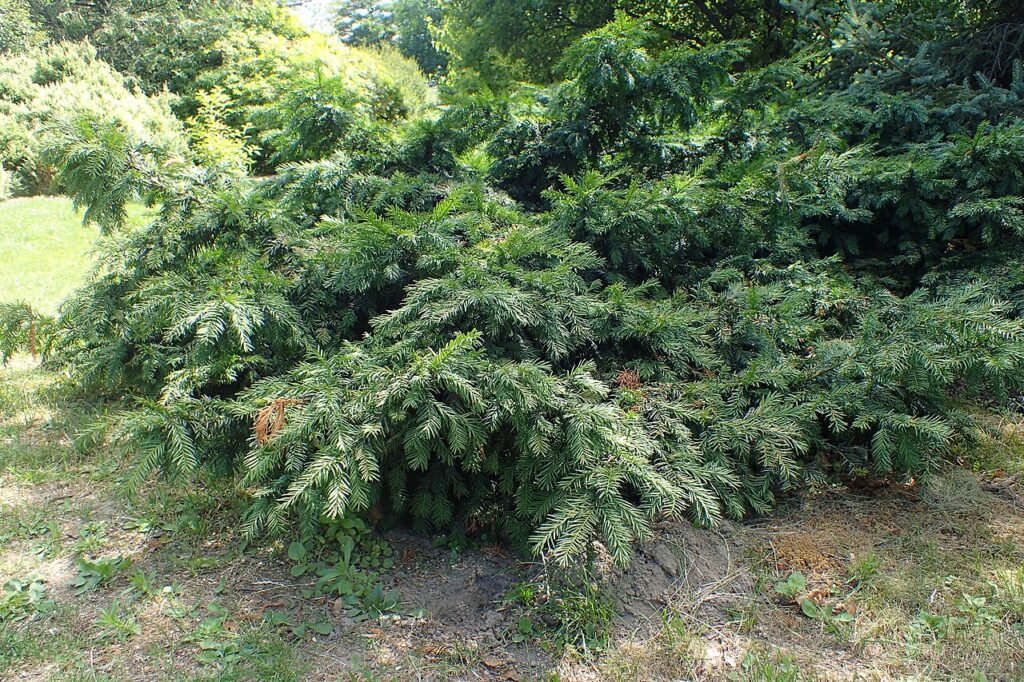
Dwarf yew is an evergreen shrub with dark green needles and a dense growth habit, making it an excellent choice for low hedges or ground covers. It adds year-round structure and greenery to winter gardens, while its compact size makes it perfect for small spaces. The shrub’s adaptability to different soil types and growing conditions makes it a versatile option. It is slow-growing, ensuring it will maintain its shape over time.
Dwarf yew grows best in well-drained soil and prefers partial to full shade. It is tolerant of cold temperatures, making it ideal for winter interest in colder climates. Once established, it is relatively low-maintenance and requires little care. Occasional pruning helps maintain its neat appearance and ensures healthy growth.
Skimmia (Skimmia japonica)
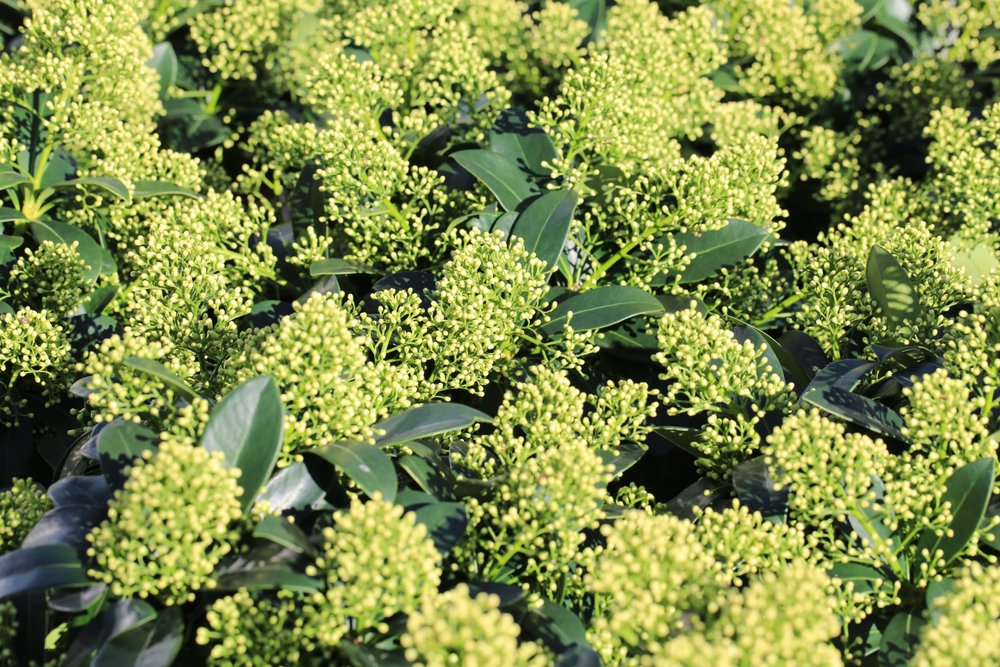
Skimmia is an evergreen shrub that thrives in shaded areas, providing interest throughout the winter. Its leathery, dark green leaves remain vibrant in cold weather. In winter, it produces fragrant white or pink flowers that attract pollinators. The shrub also bears bright red berries, which add additional color to the landscape, especially during the colder months.
Skimmia thrives in acidic, well-drained soils and is perfect for shady or woodland gardens. It is an excellent choice for creating year-round color in low-light areas. Skimmia requires little maintenance once established and tolerates a variety of growing conditions. Regular pruning helps keep the shrub tidy and encourages better flowering.
Mahonia (Mahonia aquifolium)
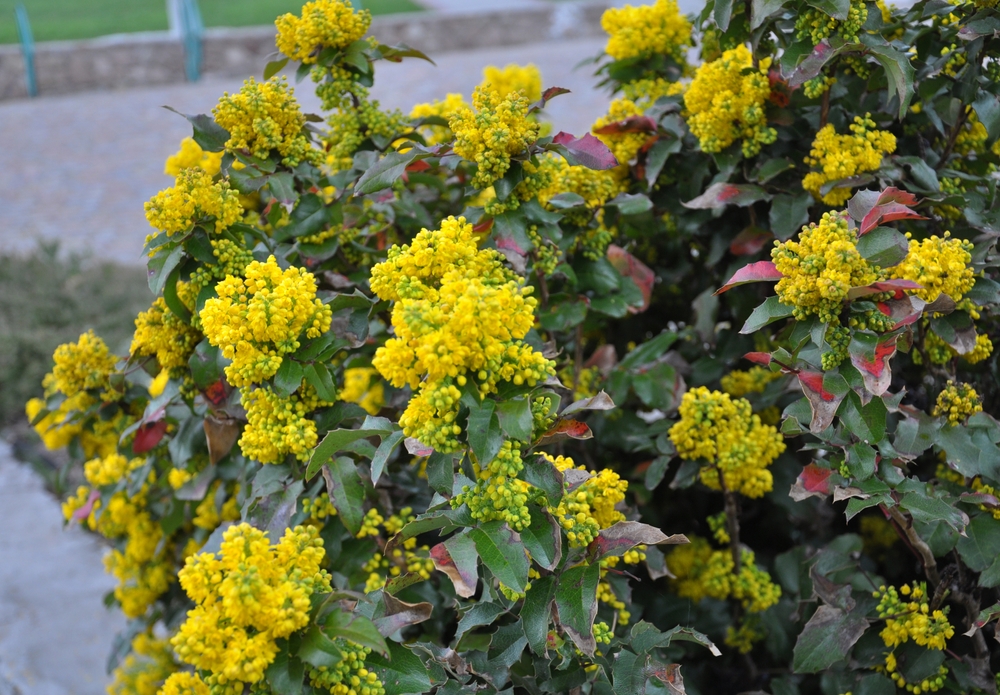
Mahonia is an evergreen shrub that is perfect for winter gardens, known for its bold, holly-like leaves and vibrant yellow flowers. The yellow blooms appear in late winter, providing a cheerful pop of color during the colder months. Its dark green, spiny leaves remain vibrant throughout the year, adding texture to the garden. Mahonia also produces blue-black berries that are attractive to birds.
This shrub thrives in shady areas with well-drained, slightly acidic soil. Mahonia is hardy and adaptable, making it a great choice for both urban and rural gardens. It is relatively low-maintenance but can benefit from occasional pruning to maintain its shape. The bright yellow flowers attract pollinators, adding another layer of biodiversity to your garden.
Euonymus (Euonymus fortunei)

Euonymus is an evergreen shrub that is versatile and hardy, often used in hedges or ground covers. Its glossy, dark green leaves remain attractive year-round, providing year-round interest. In colder months, some varieties take on reddish or purple hues, adding color to the garden. Euonymus grows quickly and can easily be shaped into low hedges or borders.
Euonymus thrives in a variety of soil types and can tolerate both sun and partial shade. It is well-suited for creating privacy screens or borders in a garden. The shrub is relatively low-maintenance and resistant to pests and diseases. Regular pruning helps keep it in shape and encourages dense growth.
Laurel (Prunus laurocerasus)

Laurel is a large evergreen shrub with glossy green leaves that create a dense, attractive hedge. Its foliage provides a backdrop for other plants, while its white spring flowers add a touch of elegance. The shrub can grow quite large, making it ideal for creating privacy or as a background plant. The glossy, dark green leaves stay vibrant even in winter, offering color and texture to the garden.
Laurel thrives in well-drained, fertile soil and prefers partial to full shade. It is highly adaptable and can be pruned to maintain a neat, compact shape. This shrub is excellent for adding structure and greenery to the garden throughout the year. Regular trimming helps control its size and promotes healthy growth.
Snowberry (Symphoricarpos albus)
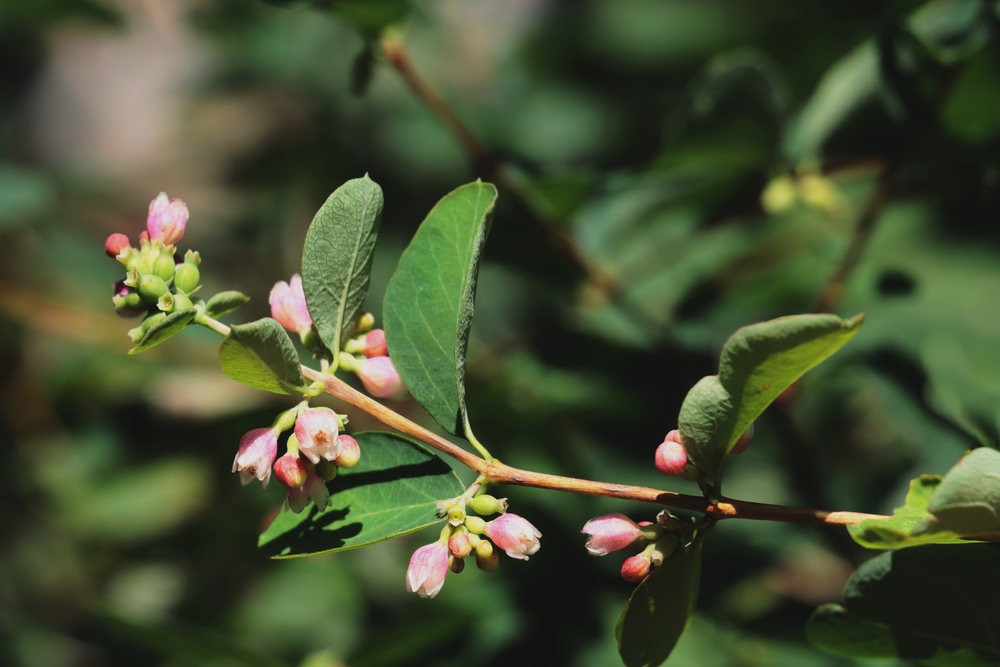
Snowberry is an attractive deciduous shrub that holds its white berries well into winter. The berries create a striking contrast against its dark green foliage, brightening up the garden during colder months. This shrub is ideal for adding color and texture to winter landscapes. Its ability to thrive in various conditions makes it an excellent addition to any garden.
Snowberry grows well in moist, well-drained soil and prefers full sun to partial shade. It is easy to grow and can handle a variety of soil types, making it a low-maintenance shrub. The berries are particularly popular with birds, offering food during winter. Regular pruning helps to shape the shrub and prevent overcrowding.
This article originally appeared on Avocadu.
